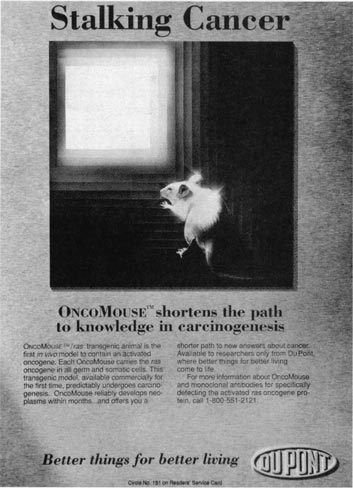
This Article From Issue
May-June 1998
Volume 86, Number 3
DOI: 10.1511/1998.25.0
Modest_Witness@Second_Millenium.FemaleMan©_Meets_OncoMouse™: Feminism and Technoscience. Donna J. Haraway. 360 pp. Routledge, 1997. $65 hardcover, $18.95 paper.
In the opening pages of her fourth book, Donna Haraway asks "for a generous literacy from the reader." This is both invitation and warning to anyone who wishes to participate in Haraway's exploration and critical analysis of contemporary technoscience. The author draws on diverse disciplines (biology, feminist science fiction, history, anthropology and literary theory, among others) and employs diverse genres (many of the analyses work through visual images and mathematical jokes).
The introduction maps out the book's arguments by elaborating in turn each piece of the e-mail address that serves as the book's title. The @, for example, is discussed as one of the chief signifiers of the Internet, and the Internet serves as a metaphor and model throughout.

From Modest_Witness.
Haraway emphasizes and elucidates how objects of technoscience such as the first patented animal, DuPont's transgenic OncoMouse, are embedded in a dense network of interconnections. These historical and contemporary links interconnect large arrays of humans (scientists, lawmakers, laboratory workers, environmentalists) and nonhumans (machines, animals, computers, genes) on a changing military, political and economic landscape. The standard categories of the modern age—natural as opposed to artificial, for example—will simply not work in understanding objects of a new technoscientific age; this patented and engineered animal is simultaneously natural and artificial, biological and economic, subject and object of research, a hybrid entity that demands a hybrid analysis.
A second underlying argument is that we can occupy no clear-cut for-or-against position but are implicated and involved in the "net of stories, agencies, and instruments" in which objects such as the transgenic animal, the gene, the bomb, the chip and the fetus are embedded.
The book is designed with a hypertextual sensibility and should not necessarily be read from beginning to end. It is a highly interactive text. Each chapter contains Lynn Randolph paintings made in conversation with Haraway's work. Together with a rich set of cartoons and advertisements, these images ask the reader to move between images and text, to form her own connections and impressions.
Those unfamiliar with Haraway's previous work may wish to start in the third section of the book, "Pragmatics," where Haraway analyzes gene mapping, reproductive technology and freedom, and the biology of race and concurrent perceptions of human kinship in the 20th century. This will help the new reader gain some of the "generous literacy" requested in the first few pages, by seeing how Haraway takes up both traditional and nontraditional tools of social analysis to read the images, rhetoric and material practices of science. Haraway is an important figure in the historical, social and anthropological study of science and technology. Her simultaneous critique of and building upon her colleagues' work represents another challenging and creative contribution to this field.
As evidenced by phenomena such as the rapid growth of bioethics, the practice of science and technology today does not and will not remain constrained to a category all its own, apart from the social, economic, ethical and political world. This innovative work offers a diverse set of tools with which to make a constructive critique of technoscience, whatever an individual's place in the network.—Hannah Landecker, Science, Technology and Society, Massachusetts Institute of Technology
American Scientist Comments and Discussion
To discuss our articles or comment on them, please share them and tag American Scientist on social media platforms. Here are links to our profiles on Twitter, Facebook, and LinkedIn.
If we re-share your post, we will moderate comments/discussion following our comments policy.